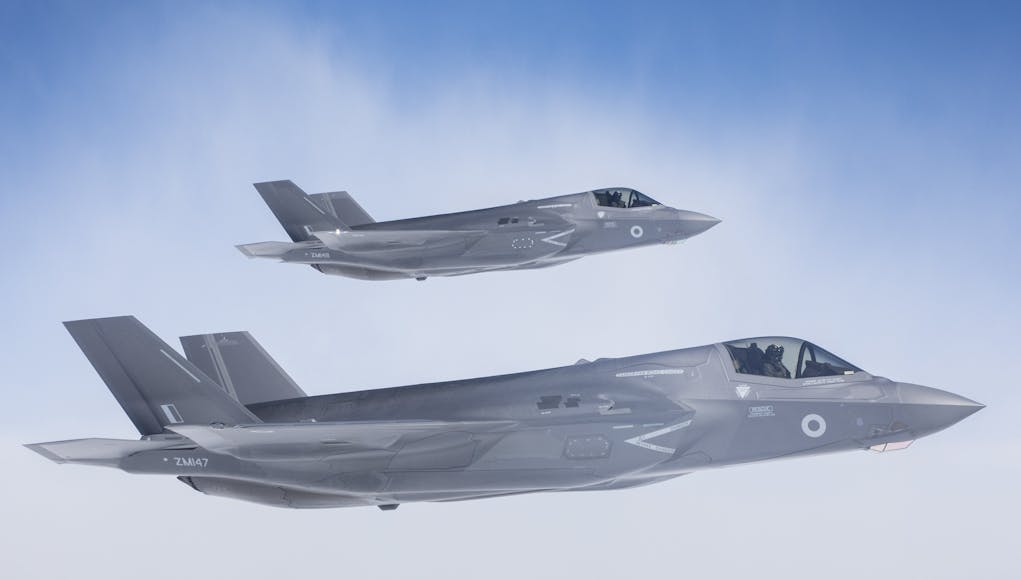After completing inspections, more than 80 percent of operational F-35 jets have been cleared and returned to flight operations with the rest to follow, say Lockheed Martin.
In a statement, the firm say that all US services and international partners have resumed flying with their cleared aircraft.
“The F-35 Joint Program Office continues to work closely with the military services to prioritize fuel tube replacements using the current spares inventory. Pratt & Whitney is rapidly procuring more parts to minimize the overall repair timeline for the remaining jets.
Current inventory will restore about half of the impacted jets to flight operations, and the remaining aircraft are expected to be cleared for flight over the coming weeks.
The issue is not expected to impact F-35 deliveries and the program remains on track to meet its target of 91 aircraft for the year.”
Earlier in the month, the F-35 Joint Program Office issued an enterprise-wide inspection of a fuel tube within the engine on all F-35 aircraft resulting in a temporary grounding so inspections could take place. The jets currently undergoing trials on HMS Queen Elizabeth were amongst the first to return to flight.
5 of the UK’s 16 F35s were found to have fuel tubes needing replaced, it is understood that those five aircraft remain grounded pending replacement of the tubes.
Lockheed say that if an engine had a suspect fuel tube installed, the part was to be removed and replaced. If the engine had a known good fuel tube installed, then the aircraft could return to flight status.
“More than 1500 suppliers are on the F-35 program and this is an isolated incident which is quickly being addressed and fixed. Safety is our primary goal, and we will continue to take every measure to ensure safe operations while we execute our mission.
The action to perform the inspection resulted from the ongoing investigation of the F-35B that crashed in the vicinity of Beaufort, South Carolina on 28 September. The aircraft mishap board is continuing its work and the U.S. Marine Corps will provide additional information when it becomes available.”
The primary goal following any mishap is the prevention of future incidents, the issue now appears to have been resolved.














I thought it was only supposed to be 24/48hrs?
For the UK ones it was not far off.
At least your comment is against an F35 story for once…
Let’s hope we will see the RAF returning them to the skies after their five week break.
Tally Ho Tally Ho!
I wonder if that one of the 111 category1 problems fixed, or another one found?
https://www.popularmechanics.com/military/aviation/a21098498/f-35-problems-fix-before-production/
Lol.
Has every problem been fixed on every military Jet? This was a batch issue with fuel lines. Things like this happen all the time and it is being replaced as a precaution. I would rather that than someone die. Remember that in 2010 the entire Typhoon fleet was grounded? Or have you conveniently forgot about that one?
That one lol! I’m talking about 966 known faults Lee1 after seventeen years and counting.
“Currently, the U.S. military and foreign allies are buying F-35s at a rate of about 70 a month. Once the plane is declared operational however the number of planes will shoot up to more than 100 a month. The GAO worries that, unless the Category 1 and 2 deficiencies are resolved before full rate production the number of planes that will need fixes will skyrocket, as will the costs and complexity of fixing them.”
And again, How many “Faults” remain unfixed on other comparable aircraft? I would assume quite a few. Some “Faults” are very bad and need immediate attention. Other “Faults” are just something that does not quite meet expectations but is otherwise generally ok to fly and can be fixed at some point in the future. Not all “Faults” are equal…
In My Day, This was Normal for Carrier Aircraft. We Just let the Experts Get on with It. No Real Problem here.
working on Sea King mk5 helicopters in the mid 80’s, as said above, there are always faults occurring, only significant faults require immediate attention, otherwise they are classed as deferred defects and rectified during servicing. We had some original 1969 Sea Kings operating alongside new build 1986 models, all had faults, often the newest carried the most minor snags. Sounds like another F35 press Corp story blown out of proportion.
Sadly not in this case Basil.
“The JPO suspended durability testing for the F-35B
after completion of the second lifetime of testing in
February 2017; the test article had so many repairs it was
no longer representative of the production aircraft. The
program has not yet procured another durability test article
for the F-35B to begin the third lifetime of testing. The
effect of the failures observed and repairs required during the
first two lifetimes of testing on the service life certification
of the F-35B aircraft is still to be determined. The service
life for all three variants is planned to be 8,000 hours,
however the F-35B service life may be less than that, even
with extensive modifications to strengthen the aircraft
already produced.”
The report thus far.
http://www.dote.osd.mil/pub/reports/fy2017/pdf/dod/2017f35jsf.pdf